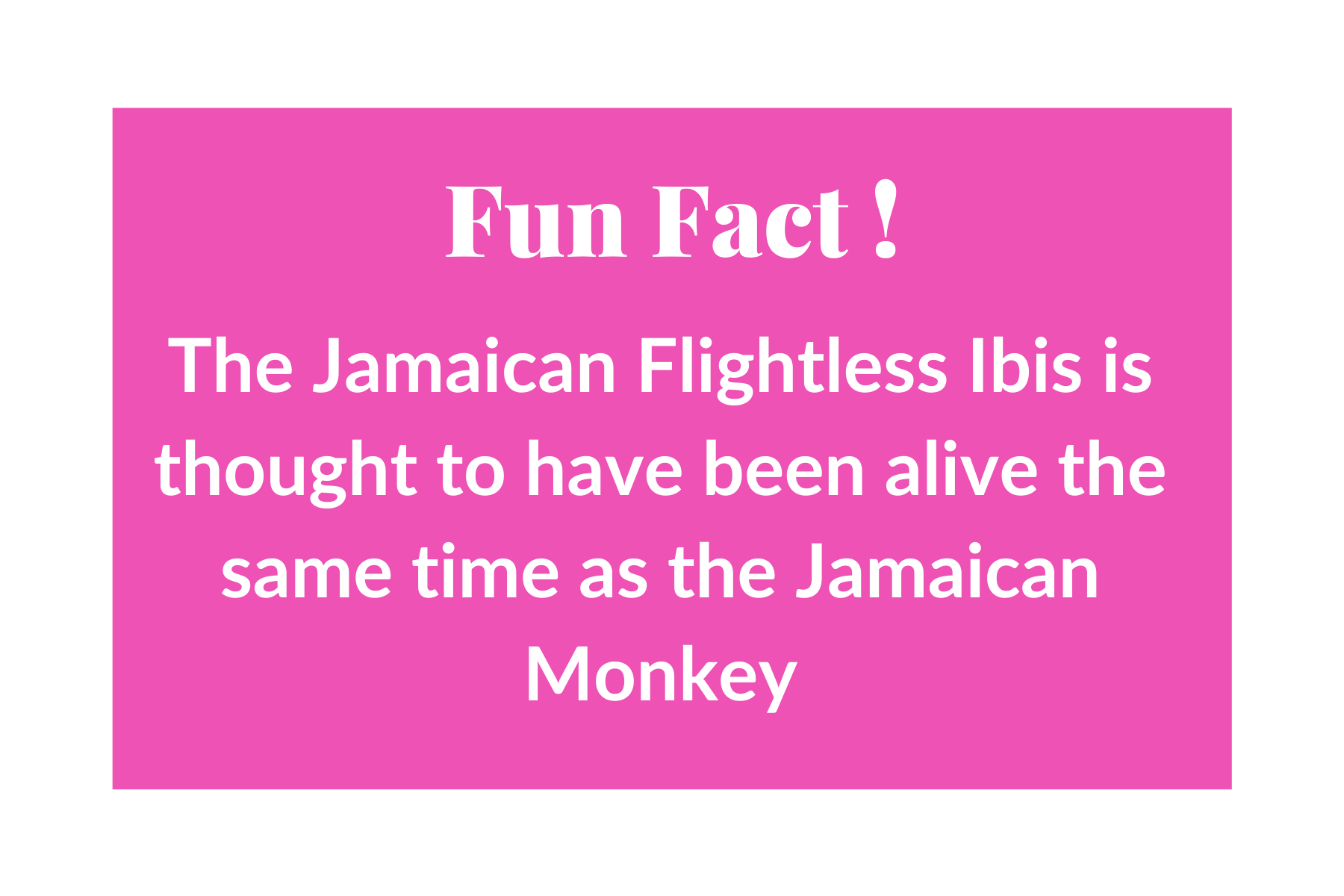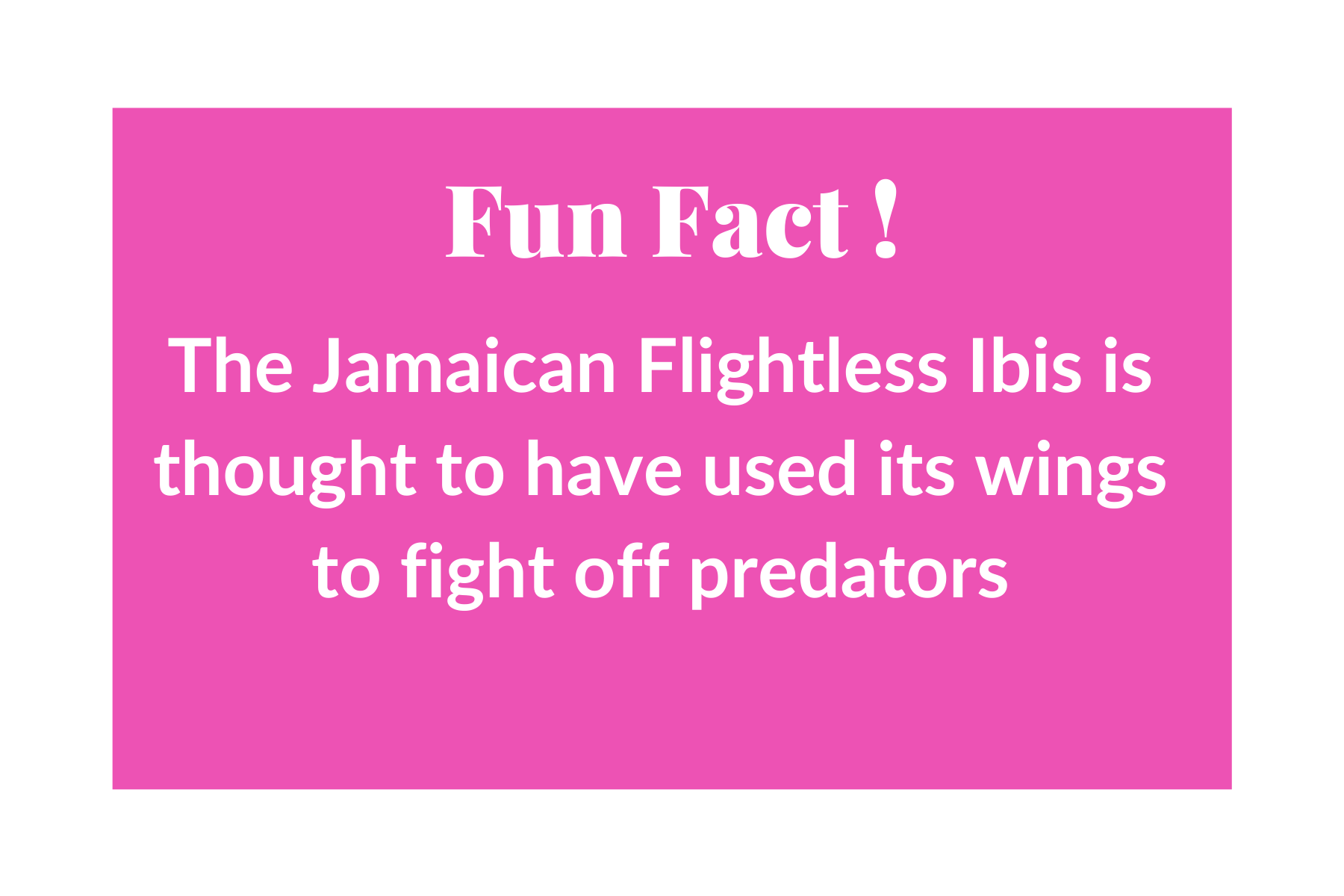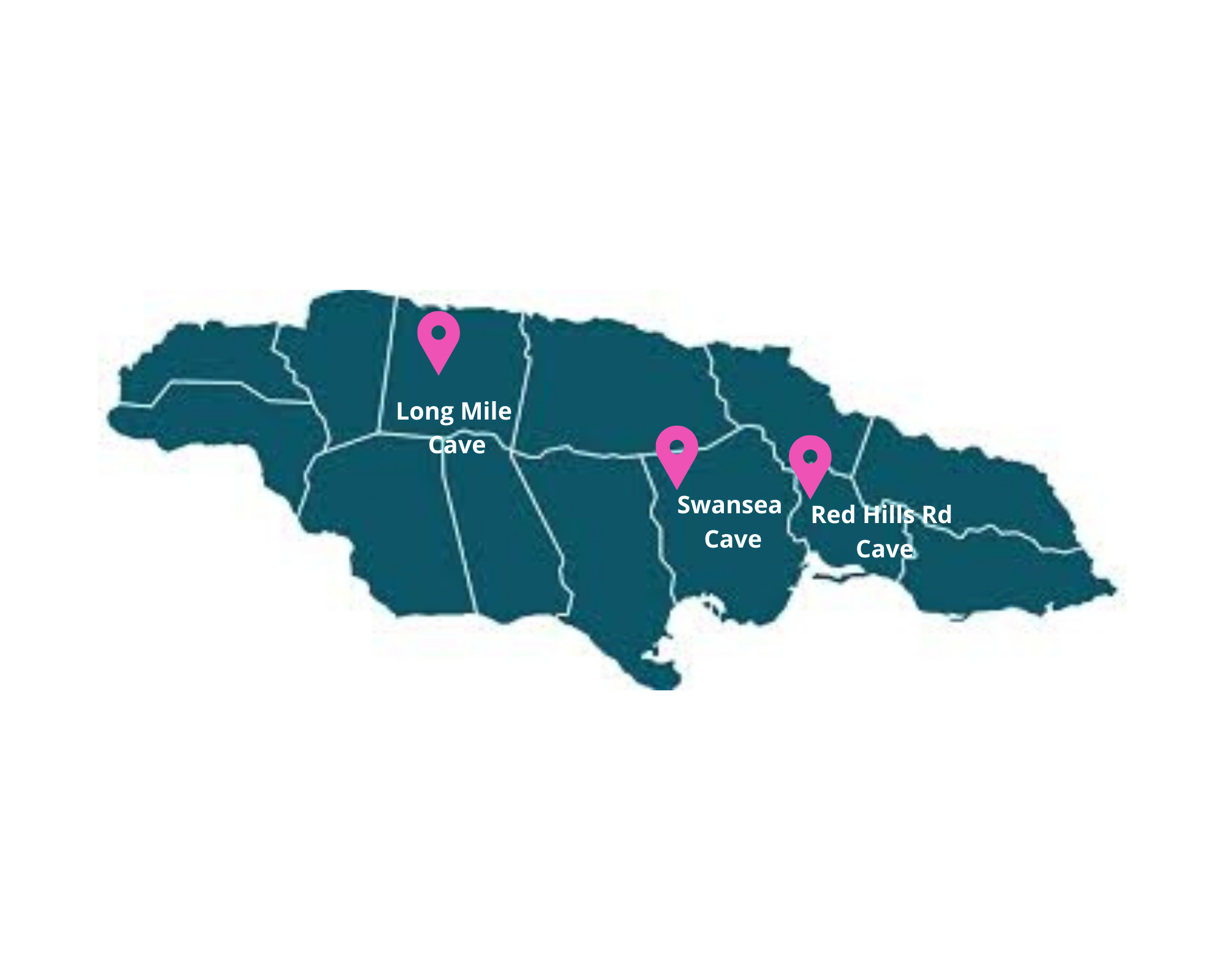Jamaican Flightless Ibis
Scientific Name: Xenicibis xympithecus
Status: Extinct
Range: Jamaica
Habitat: Wetlands, Forests, Plains
Description
The Jamaican Flightless Ibis is an ibis endemic to Jamaica that is believed to have existed during the late Quaternary Period.
The Jamaican Ibis is thought to have been a relatively large bird due to conclusions from bone remains with a long bill and long legs.
Remains of the Ibis were first collected in 1919-1920 by H. E. Anthony who found fossil deposits in the Long Mile Cave in Trewlany.
The Jamaican Ibis is thought to have been once found widely across the island as more remains were found in the Swansea Cave in St. Catherine and the Red Hills Road Cave in St. Andrew.
Map of Jamaica showing cave sites where remains of the Jamaican Flightless Ibis were found
Habitat
Ibises are known to inhabit various areas such as forests, wetlands and plains.
Flightless not Fightless
Drawing of wing of extant flying American White Ibis (left) and clubbed wing of extinct Jamaican Flightless Ibis (right)
It is believed that the Jamaican Ibis used its wing as a defense mechanism to fight away predators.
Several features of the its limbs indicates where the flightless ibis could have used its wing to fight. The metacarpal (hand bone) was large, curved and hollow which would allow it to deliver strong blows to its opponents. The long forearm and structure of its joints enabled the wing to move faster and extend to obtain a farther reach.
Ibises are very territorial and will get into fights especially related to nesting and feeding.
The flightless ibis would have also needed to fight predators away from its nest as young ibises live in the nest and are cared for by their parents until they are old enough to walk.
Conservation Status
The Jamaican Ibis is one of two flightless ibis species with the other Hawaiian Flightless Ibis (Apteribis glenos) endemic to Hawaii.
Both species are now extinct.





